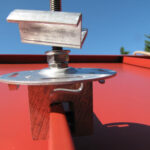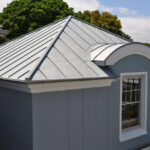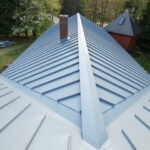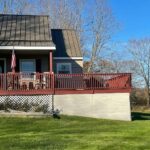Metal Roofs: Eight Myths Uncovered
May 19, 2016 | By Mike Gonet | Filed under: Education, General, Metal Roofing
Myths come and go about metal roofs. The transformations of and improvements to the metal roof product that have occurred over the years render these myths largely obsolete. Following are eight of the today’s most common myths – and answers to them.
1. Metal Roofs Are Ugly
On the contrary, today’s metal materials offer more options than any other kind of roofing on the market. There is a wide range of materials, colors, finishes, and styles available. It is safe to state that aesthetic quality is a strength, not a weakness, of metal roofs today.
2. Metal Roofs Are Noisy
Not true. In fact, these metal roofs installed using modern techniques may be quieter than an asphalt shingle roof. Typically, a metal roof is installed by fastening solid sheathing to an existing roof that already benefits from insulation and attic space beneath it.
3. Hail Damage
Large, heavy hailstones can damage any roof – asphalt, wood, or metal. Normal hailstones do not.
4. Colder in Winter
A metal roof does not affect the temperature of a vented attic in the winter. It is the insulation under the roof and of the attic floor that helps retain a house’s heat in the winter.
5. Hotter in Summer
The exact opposite is true. Based upon the finish, metal roofs reflect much of the solar radiation normally absorbed by an asphalt roof, especially if the roof color is white or another light color. This helps keep a house cooler in the summer.
6. Metal Roofs Attract Lightning
Not correct. Lightning is attracted to the tallest object in the area. The roofing material per se is not a factor. If lighting should strike a metal-roofed house then the metal would conduct the electrical charge. The metal roof would disperse the energy throughout the structure, lessening the possibility of a fire erupting when resistance is encountered and heat then generated when the electrical charge attempts to ground itself. Since metal is not flammable or combustible, it can be a safer roofing option than other materials.
7. Metal Roofs are Expensive
Because the replacement costs of repeat asphalt shingle installations accumulate over the lifetime of a single metal roof, an asphalt roof installation (i.e., multiple asphalt roofs) can cost two to four times the price of a metal roof over the latter’s lifespan. A metal roof will likely cost more up front than one composed of asphalt shingles. But the total cost of roofing when considered over the relevant timeframe militates in favor of the metal roof choice.
8. Metal Roofs Have No Resale Value
Experience indicates otherwise. In fact, metal roofs are highly valued. According to Remodeling Magazine, homes that have been renovated with metal roofing recover 85 percent of costs nationally – and up to 95 percent for homes in the eastern U.S. Home buyers are well aware of the value a metal roof adds and are willing to adjust their offering prices accordingly





